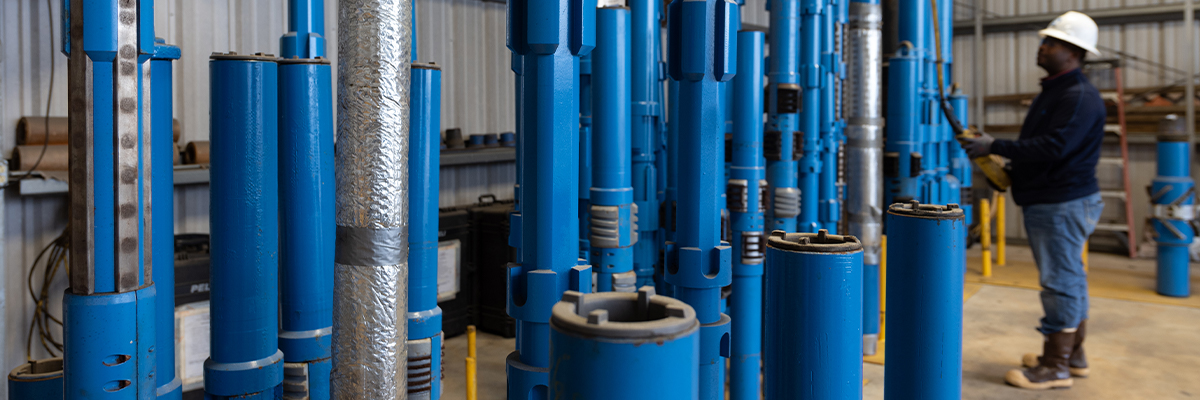Temporary Well Abandonment with a Unique Clear-Brine Displacement System
By Gary Poole | Account Manager/Technical Advisor | August 16th, 2021


What is temporary abandonment, and how is it done?
Temporary abandonment is an efficient tactic to put a well in a holding pattern between the drilling and completion phases to prevent corrosion and ensure the integrity of the wellbore for however long the well needs to remain dormant. Broadening the scope of what are traditionally called drilled-but-uncompleted (DUC) wells, candidate wells for temporary abandonment can be either offshore or onshore.
Forgoing the need for time-consuming filtration, the TETRA procedure entails displacing the solids-laden drilling fluid with a solids-free clear brine fluid (CBF) that will remain in the well until operations resume. When the operator is ready to restart the well, the clear brine is pumped out.
As for the necessary equipment, if the rig crew has the tools to drill and case a hole, then they have the tools to perform a temporary abandonment—all they need is the right solution, like the tailored TETRA Advanced Displacement system (TADS), a three-phase displacement system composed of TETRA brines and TETRAClean 900-series chemical additives.
Why temporary abandonment of a well?
Temporary abandonment enables operators to take a more efficient approach to overall development and production of a lease. For example, a multi-well project calling for batch completions would be an ideal scenario for temporary abandonment of the wells until the entire batch is drilled and ready for completion. With upfront engineering and planning, the operator can drill multiple wells, displace each with CBF as they move along in the project, and be assured each wellbore will be clean, sound, and free of drilling fluid and corrosion in preparation for the subsequent batch-completion phase.
Temporary abandonment may also serve as a cost-effective stopgap measure when a crucial tool or piece of equipment needed for the completion phase is delayed, or when the production facility is at capacity or not yet in place.
What other economical benefits does temporary abandonment provide?
In addition to the aforementioned benefits, the TETRA procedure eliminates the need to replace the drilling fluid left in one well with additional drilling fluid to drill the next well. The CBF used in temporary abandonment is a more economical alternative as well as a practical alternative to the drilling fluid that will have to be eventually displaced from the well in preparation for completion.
What is the typical design criteria of temporary abandonment?
Each application is considered unique and therefore requires a clear-brine displacement system designed specifically for the job, accounting for factors like drilling-fluid composition, wellbore volume, and the duration of the temporary abandonment. Laboratory analysis determines the appropriate chemistry, volume, density, and solids-carrying capacity of the TADS, which, for example, might be composed of a solids-free blend of calcium bromide and zinc bromide brines coupled with additives for corrosion inhibition.
The tailored system is then pumped into the well with a low-volume spacer train and circulated to the surface. An ideal application will fully displace the solids-laden drilling fluid with a single circulation of the TADS, yielding a low turbidity in the range of 30–45 NTUs from cased hole to mudline with minimal or no filtration. When the operator is ready to initiate the completion phase, the TADS is circulated out of the well and can be either returned to TETRA or, in some cases, even repurposed as a backup working fluid.
What are the results of TETRA temporary abandonments?
CASE No. 1 – Green Canyon, Gulf of Mexico – 10 Months
In one case, when the TETRA CBF was circulated out of the well after 10 months, the brine was so clear, with a turbidity of 35–45 NTUs, the operator elected to keep it as a backup working fluid for completion operations. The wellbore showed neither excess iron corrosion nor any significant solids, so filtering the entire volume from the annulus was not required.
CASE No. 2 – Walker Ridge, Gulf of Mexico – 6 Months
In another case, when the TETRA CBF was circulated out of the well after six months, the brine required minimal filtration, contained neither iron nor solids, and had a turbidity of 35 NTU. The production assembly and tubing were run into the wellbore without any issues or indication for fill.
TETRA temporary abandonment is ultimately a solution for greater efficiency and cost-effectiveness
Having demonstrated the success of temporary well abandonment, TETRA offers its clients a proven solution for more efficient multi-well field development or when it’s crucial to adapt to changes in timing or logistics. As always, the Company remains dedicated to applying its chemistry and engineering knowhow to tailor a temporary abandonment application that’s safe, effective, and cost-efficient, and delivers tangible value to clients.



